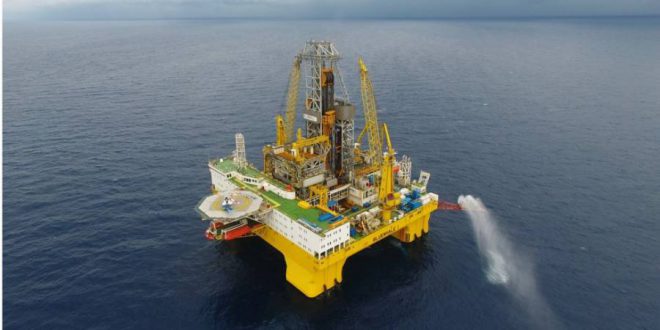China’s exploration of flammable ice in the South China Sea is proceeding well. with almost 7.000 cubic metres of the potentially huge energy source produced each day. according to the Chinese government.
Top of Form
Bottom of Form
China began collecting methane gas from methane hydrate – known as combustible ice – in waters near the Pearl River estuary last month.
China joins the US. Canada and Japan. which are also tapping into the potentially abundant source of energy.
China had explored about 210.000 cubic metres of combustible ice in the South China Sea and its daily production had reached 6.800 cubic metres by last Saturday. the Guangzhou Marine Geological Bureau said. according to the state-run news agency Xinhua.
“We are monitoring the air. seawater and seabed and exploration equipment. We are also closely following the amount of methane and carbon dioxide.” Ye Jianliang. the head of the bureau. was quoted as saying by Xinhua.
The latest figures come after last month’s announcement that China had successfully extracted gas from the “flammable ice” for the first time.
The gas was extracted on a floating production platform in the Shenhua area of the South China Sea. 300km southeast of Hong Kong and was heralded by China as a breakthrough.
Ye said at that time that daily output of gas had exceeded 10.000 cubic metres. while the best day recorded was 35.000 cubic metres.
China was a latecomer to developing flammable ice. Research has been dominated by the US. Canada and Japan. but China has been increasing its efforts since promising reserves were discovered in the South China Sea in 2007.
Methane hydrate is a white solid. easily set alight. which forms at very low temperatures from water and methane produced by microorganisms.
The fuel produced after extraction burns cleaner than coal. but methane is still a greenhouse gas and contains pollutants.
One of the main concerns about the technology is of methane leaking into the atmosphere if there is large-scale production.
Ye said strict measures have been taken to protect the environment and there had been no pollution produced so far during extraction in the South China Sea.
The fuel is seen as a promising energy source. thanks to its abundance and energy intensity. One cubic metre of the flammable ice is equal to more than 160 cubic metres of regular natural gas.
Some researchers estimate global methane hydrate reserves may be twice that of other known fossil fuels – enough for 1.000 years of human use.
But it can also be extremely difficult to collect as the hydrates are often scattered over large areas on the seafloor.

 Iran Energy News Oil, Gas, Petrochemical and Energy Field Specialized Channel
Iran Energy News Oil, Gas, Petrochemical and Energy Field Specialized Channel



